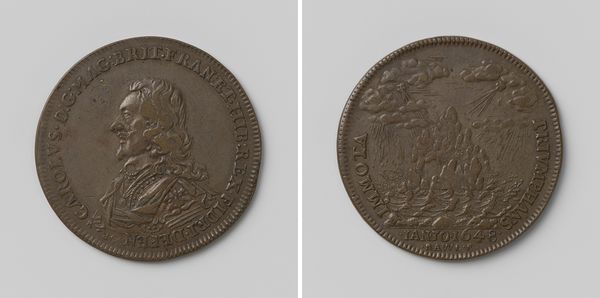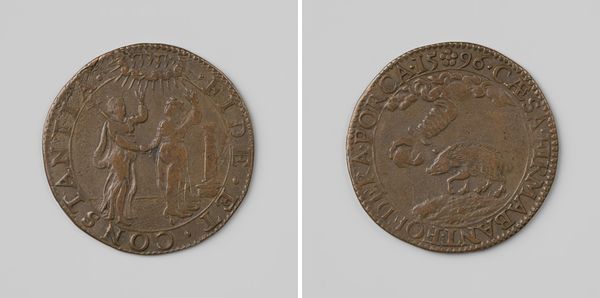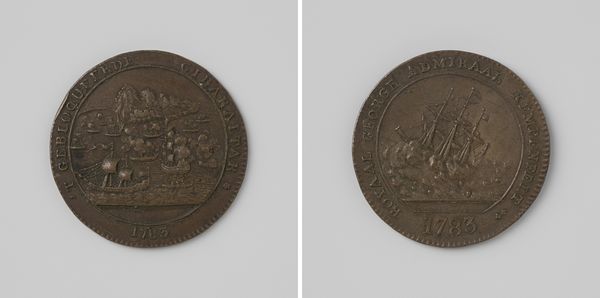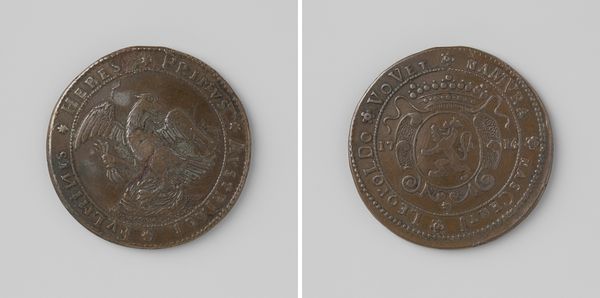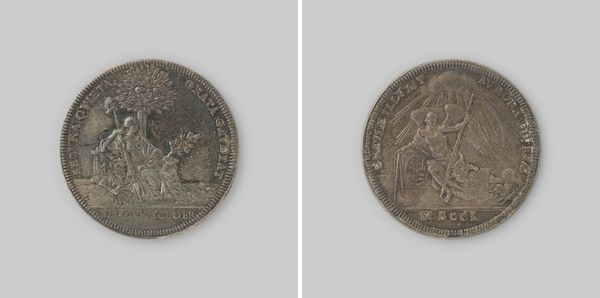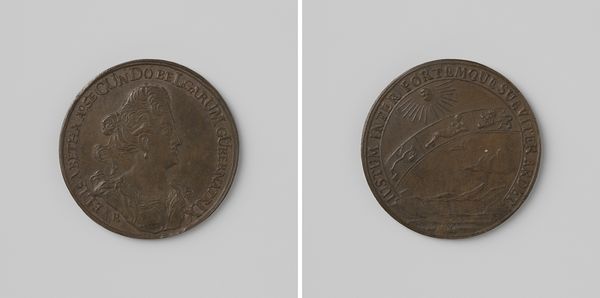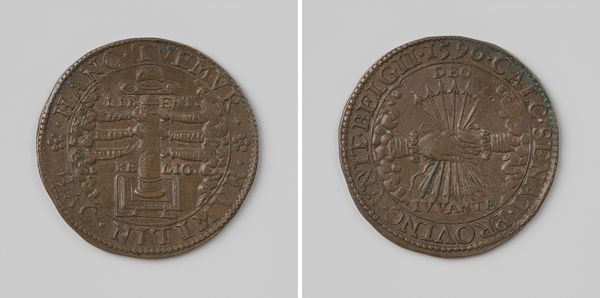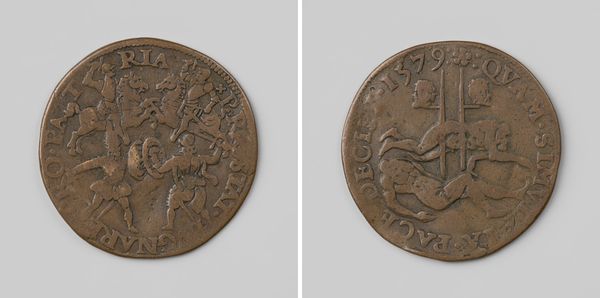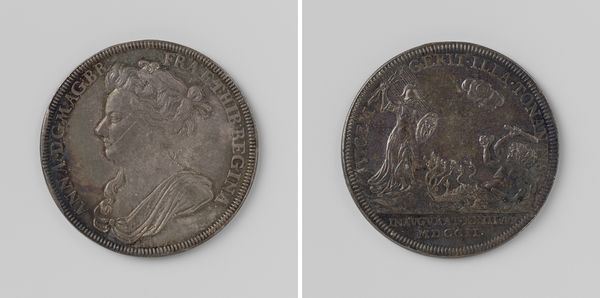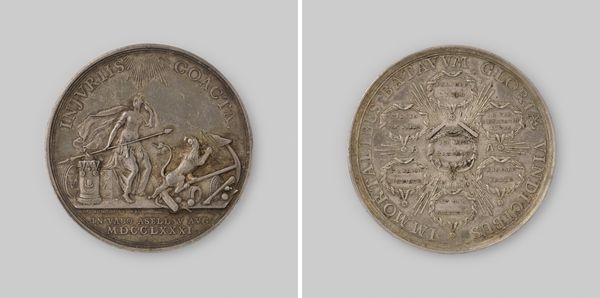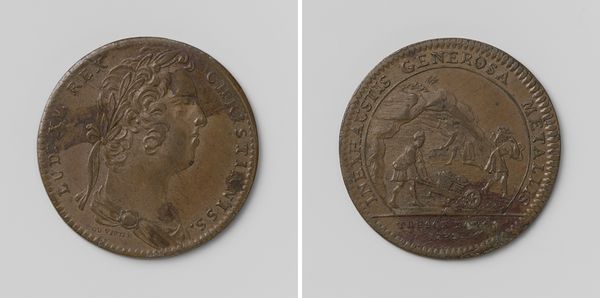
Afzwering door de Staten-Generaal van Filips II, koning van Spanje als landsheer der Nederlanden 1583
0:00
0:00
print, metal, engraving
# print
#
metal
#
sculpture
#
11_renaissance
#
history-painting
#
northern-renaissance
#
engraving
Dimensions: diameter 3 cm, weight 54 gr
Copyright: Rijks Museum: Open Domain
This coin, created by Gerard van Bylaer, immortalizes the Dutch Republic's declaration of independence from Philip II of Spain. The imagery is potent: notice the lion, a symbol of the Netherlands, fiercely confronting the Spanish king, while a figure kneels, representing the oppressed Dutch populace yearning for liberation. This act of defiance finds echoes in earlier visual languages. The lion motif, a symbol of strength and sovereignty, dates back to ancient heraldry, reappearing across cultures to signify power and resistance. Consider how the lion is depicted in ancient Mesopotamian art, guarding temples, and compare it to its role here, embodying the Dutch struggle. This continuity reveals how collective memory shapes our symbols. The emotional weight of the image lies in the tension between oppression and the desire for freedom. The kneeling figure evokes vulnerability, while the lion's aggression embodies the rising spirit of rebellion. It is through such potent symbols that historical events become deeply embedded in our collective consciousness, continuing to resonate through generations.
Comments
No comments
Be the first to comment and join the conversation on the ultimate creative platform.
